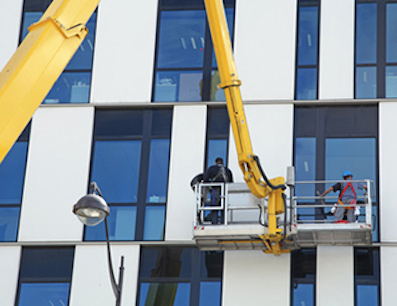 Cleanzine: your weekly cleaning and hygiene industry newsletter 18th April 2024 Issue no. 1110
Cleanzine: your weekly cleaning and hygiene industry newsletter 18th April 2024 Issue no. 1110
Your industry news - first
The original and best - for over 20 years!
We strongly recommend viewing Cleanzine full size in your web browser. Click our masthead above to visit our website version.
DCS Multiserve - How to clean a... Skyscraper
 Skyscrapers are impressive structures that make up some of the world's most impressive skylines - from New York City to London and Shanghai. The Burj Khalifa in Dubai is the tallest on record, measuring 828 metres, 830 to the tip.
Skyscrapers are impressive structures that make up some of the world's most impressive skylines - from New York City to London and Shanghai. The Burj Khalifa in Dubai is the tallest on record, measuring 828 metres, 830 to the tip.
It's so big, in fact, that it even has its own Twitter handle. With offices, hotel rooms, social spaces and function rooms in skyscrapers across the world, the windows - and the building itself - need to be spotless to showcase it in its best light. So how do these impressive buildings get cleaned? DCS Multiserve, a cleaning company in Newcastle, has put together some interesting insights on this most daring of tasks...
When cleaning a skyscraper, there are a number of conditions and circumstances that are unique to that situation. The operatives are working at a height, meaning there's an added risk (and fear), and they are exposed to warmer weather and strong winds, so need to be protected. Safety drills are an essential part of the job, and are performed regularly to make sure operatives know what to do if anything happens when they're working so high up.
Historically, cleaners at height have stood on window ledges holding onto the window ledge for support. As this eventually proved to be a dangerous method, leather belts were introduced to anchor workers into place, and later scaffolding platforms were also introduced. Today, there are many more options, depending on the scale of the work.
For cleaning at tall building or skyscraper level, cleaners operate on a rope and harness, tied into a Bosun's chair, with a descent mechanism. The rope mechanism allows window cleaners to cover large areas very quickly. An anchor is mounted on the roof of the building, allowing cleaners to descend - cleaning one floor and moving down to the next.
An alternative form of equipment is the carriage; mounted on a rail, it holds multiple cleaning operatives and moves from left to right, cleaning big areas quickly.
There's also the boom, a more traditional piece of equipment, often permanent to the building that holds a platform of cleaners and is used whenever needed.
To clean the Burj Khalifa, 12, 13-tonne machines were fixed to the buildings while the 36 cleaners did their work. Each covering 40 storeys, the machines were manned by workers inside metal cages. The machines, when not in use, are hidden in the building's glass panels.
The cleaners themselves on the Burj Khalifa have somewhat traditional equipment - namely hot water and the stereotypical squeegee. They have to be protected from the extreme sun and heat they are exposed to while cleaning the skyscraper. They have to wear specialist clothing that looks like moonsuits and are only allowed to work in more protected areas.
The estimated time it takes to clean a skyscraper obviously depends on its size - the more windows, the longer it will take.? For the Burj Khalifa, for example, it was estimated that it would take 36 window cleaners three months to wash its 206 storeys of windows - 24,000 windows in total, equalling 120,000sq.m of glass!
Sources:
www.dailymail.co.uk / www.telegraph.co.uk / www.express.co.uk / www.scienceabc.com
T: (0191) 216 9000
W: www.dcsmultiserve.co.uk
6th April 2017







